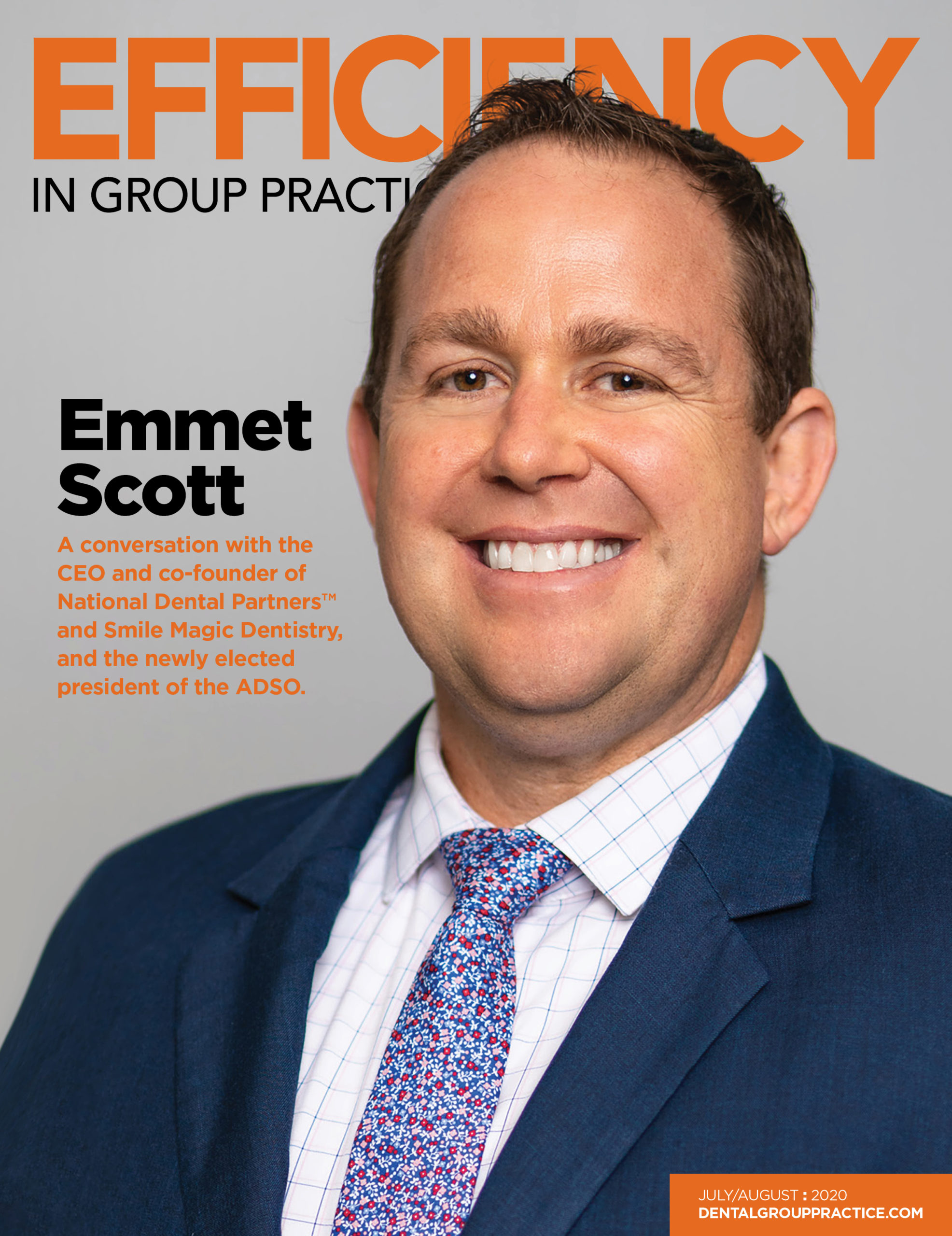Cultural Function and Strategic Advantage
By Robert Spiel, MBA & Art McCracken
Finger Pointing or Accountability
Entitlement or Empowerment
Function or Dysfunction
Mediocre Success or Unlimited Success
These outcomes do not occur by chance – they are the result of choice. Each day as the owner of or executive in a group practice, you choose between one and the other. Each day you set the stage for either function or dysfunction. Ultimately, the culture of your organization can and will define which of these outcomes you achieve. It’s that simple – and yet that complex. Your culture can literally be your “Secret Sauce.”
Culture is on constant display in your organization and is experienced by every patient, referring provider, employee, and owner. You can’t run from it. You can’t hide from it. And while it is not seen with the naked eye, it is tangible.
Why pay attention to this? In part, because creating a truly effective culture pays enormous dividends. In their book Corporate Culture and Performance, Harvard researchers James Haskett and John Kotter share many compelling statistics to demonstrate the game-changing value in purposefully designing a business’s culture. In their 11-year study, Haskett and Kotter found businesses that focused on building an effective culture grew 500% more than similar competing businesses that simply let culture happen.
There are also other, more immediate reasons to focus on your organization’s culture: to increase employee involvement, improve efficiency, and to create exceptional patient experiences. Shawn Parr of Bulldog Drummond described culture as a “balanced blend of human psychology, attitudes, actions and beliefs that combined create either pleasure or pain, serious momentum or miserable stagnation.” Shawn also goes on to boldly say that “Culture Eats Strategy for Lunch!” Quite simply, culture is the “way we do things around here,” and it can include how:
- decision making happens
- communication occurs
- stress is handled
- problems are solved
- change is dealt with
- goals are set
- hiring occurs
- motivation is instilled
- appreciation is shown
- rewards are given
- training occurs
- feedback is provided
- systems are developed
- vision is created
Culture, however, just doesn’t have “to happen.” As shown by Haskett and Kotter – and backed up by over 50 years of combined experience — the businesses with superior results make conscious, consistent decisions to create and perpetuate high performance organizational cultures that are resilient, proactive, efficient and able to stand the test of time. As corporate culture expert Travis Anderson of Strategic Leadership Consulting said in a recent interview,
Disney, Patagonia, Zappos.com, Google, Ritz Carlton, Toyota, Nordstrom, Whole Foods, In-N-Out Burger and Starbucks. Each one of these company names creates a mental experience associated with their brand. What they all have in common is a relentless pursuit of cultural clarity and design. As an example, Zappos.com will actually pay their employees to leave if they are not a cultural fit in an effort to protect what they would consider to be their ‘secret sauce.” Each of these companies carries significant value in the market place with sustained results year after year. Their growth is fascinating, and if you asked them, they would tell you it is in direct correlation to the culture they fight to protect.
Cultural transformation begins at the top. As a leader in your organization you must begin with an honest assessment of where your group is at and what role you can play in designing a winning culture. As hard as any group tries, it is impossible for a group to run faster than its leaders. The energy, passion, resilience and professionalism exuded by your organization are a direct reflection of you and your efforts.
Given the game-changing nature of culture, as a self-assessment of your own organization’s culture, please check the box next to each question below IF the answer is yes:
- Is there limited accountability among team members and/or owners?
- Is there blaming and complaining going on regarding the economy, patients, doctors or staff?
- Are team members or owners resistant to change?
- Does the practice experience heavy turn over in personnel?
- Are team members viewed by the owners/management as replaceable?
- Is information withheld to maintain “control”?
- Is the leadership style passive or conflicting – leading to a lack of vision, inconsistency in results and ineffective communication?
- Is showing appreciation rare?
- Is there a low level of no level of team work taking place?
- Are purse strings ultra tight with no investment in people?
Answers of “yes” to five or more of the above questions are an indication that the culture in your organization is critically ineffective. An answer of “yes” to seven or more puts your company at a code-blue stage. If nine or more were” yeses”, congratulations on still being in business. You won’t be for long.
Specific to the Group Practice Industry is how to effectively maintain a strong culture during heavy growth spurts or during acquisitions. Anytime new team members are added to the mix, you run the risk of cultural alteration and confusion. This phenomenon can be likened to adding yeast to dough. Handled badly, your bread can be ruined, handled well, the added team members can help the entire organization rise and create an even better outcome.
Turning a culture around is doable, and the steps to rebuild are the same steps as building it from the ground up. These essential steps to designing a functional, high performing culture include:
OWN IT:
Own your culture and your destiny. All progress begins first with owning the process and the results. The mindset of blaming and complaining is a trap that leads to dead ends and broken dreams. Take an honest appraisal of where your organization is from the quiz above, and honestly ask yourself the question, “What would it take to eliminate these dysfunctions from our business model, and what is my role in that?”
FOCUS & PASSION:
Sharpen your focus and passion. High performance cultures cannot be built on a foundation of money only. There must be a genuine drive for excellence in patient care and employee growth internalized by all members of the organization that starts with the owners and executive team. Don’t just own a business. Create and have a clearly defined, core-based vision statement that will act as a template for the future – and put that vision in writing. Share it with your team and solicit their commitment to that vision. Once you have a core set of believers, turn that vision into an internal force for each member of the team, and only hire employees who fit with your vision and clearly defined culture.
TRUST:
Establish transparency, integrity and authenticity. Trust is the foundation of all human relationships, but when leaders are inconsistent, don’t keep promises, speak negatively about others and hide relevant information, trust is severely eroded. Additionally, patients will only buy from those they like and trust. Be authentic in your dealings with team members and patients. Let them experience your genuine care. Engage the help of your team and partners. Don’t be afraid of being vulnerable and share the stress as well as the success.
WALK THE TALK:
Walk the talk so that values practiced = values espoused. Culture, as we have said, ultimately becomes a reflection of the values, character and focus of the owners and executive team. You cannot preach one thing, practice another, and expect to build a performance based, effective culture.
INVEST IN YOUR HUMAN CAPITAL:
People are your greatest asset; invest in them and invest in the development of your culture. Celebrate their wins and be committed to mentoring your team to greatness. When a leader realizes that his/her commitment to the success of each team member reflects back ten times in the success of the organization, great things happen.
COLLABORATE:
Create an environment of collaboration and shared ownership. The greatest words heard by a team member, as Linda Miles has said, are “I need your help.” Be willing to push decision making to the lowest level with clear budgets and boundaries. Make autonomy and teamwork hallmarks of the business. Delegate appropriately and train your team to be problem solvers – and then circle back with the owner.
ACCOUNTABILITY:
Develop a results- oriented business model with a high level of accountability. Focus your entire team on key metrics with achievable, clear measurements and clear rewards for accomplishing pre-set goals. Help your team think like owners and set their own professional goals as well. Hold yourself accountable for your goals, and help your team by creating points of accountability for their goals as well. Let your team also know the consequences for non-performance, as needed, and remember the age-old rule: praise in public and reprimand in private.
PATIENCE:
Realize that rebuilding a culture takes time, commitment and vision.
Where should a group practice owner start today if they see their culture isn’t where it needs to be? What are the immediate steps to be taken today by progressive practice owners to capture the prize of a high performance culture?
- Stop blaming and complaining. No progress in life or business starts until this reflex is overcome. Own the problem and the solution. Remember a victim mindset gets a person nowhere – even when there are significant challenges for an organization. Continually ask the question: “What can “I” do to _________?” and then act on it.
- Start now to by asking the question: “Knowing what I know now…what would I do differently and who would I bring with me on that new venture?” By pushing the mental and emotional “reset” button you can see more clearly the missteps made and the pathway to greater success and happiness. Then get your plan into writing. If a business coach would help with the development and execution of a plan, get one. The right consultant(s) can be an excellent investment.
- Embrace your role as a leader. Understand first and foremost that culture by design comes from leadership by intent. If leadership seems intimidating, remember the first mistake you made in business. Leadership is a skill that can be developed just like any other skill – and the impact of developing it affects much more than just your organization.
- Invest time and money into cultural development. It doesn’t happen on its own. Customized training that breaks through personal barriers is critical to jumpstart the process. Invest in your team. Invest in yourself.
- Reset your and your team’s expectations. Let them know you need their help and bring with you those who fit with the new culture while helping the others find a new place to land. Make commitments to your team and allow them to hold you accountable for them – and facilitate goal setting for your team members and follow up on their goals regularly.
- Realize cultural transformation begins with personal transformation. High performance cultures are a reflection of high performance leaders and team builders. The single greatest common differentiator between functional (by design) cultures and dysfunctional (by default) cultures is leadership! The essentials listed earlier are all by-products of strong and functional leadership.
Culture “by design” is an essential part of changing the path your business may be on currently. It specifically addresses the health, and profitability of an organization through team engagement, collaboration, empowerment and gratitude. Active, values-based leadership is the catalyst required to create such a functional culture. And, as examples all around us show, a truly functional culture designed with specific intent has a binding effect on team members, mid level managers, executive level owners, and patients — and it is “the secret sauce” to long-term business stability, adaptability and future growth.
It is not enough to stand idly by and hope for things to get better. External changes are inevitable. Internal change is something you as a leader in your business have direct influence over. Have you identified YOUR role and responsibility in the change that needs to take place? It’s time to implement the necessary ingredients as you begin creating…
YOUR SECRET SAUCE!
Arthur McCracken, CEO and Founder of Synapse Point Consulting and Robert Spiel, MBA, CEO and Founder of Spiel & Associates Consulting collaborate in providing personal leadership, team building and coaching for practice owners nationwide. They specialize in assisting owners in creating high performance work teams that consistently produce outstanding results for the owner, team members and patients. They also provide services in associate/owner transitions, partnership dynamics and post-fraud remediation. Members of the Speaking Consulting Network, they are available to speak nationwide. They can be contacted at [email protected] and [email protected].





